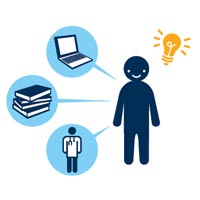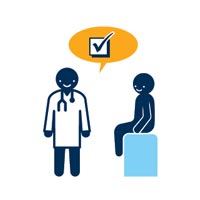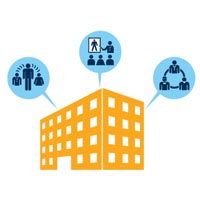All of the Patient and Family Libraries and Resource Centres at UHN offer a wide variety of consumer health brochures, books, videos and audio CDs aimed at helping patients and families learn about their health conditions, tests, treatments or community resources.
Tailored health information packages and assistance finding online health information are available upon request.
All UHN staff are welcomed to contact the libraries to assist with the promotion of health literacy for their patients and caregivers.

An individual can be health literate by using the skills needed to find, understand, evaluate, communicate, and use information.

Healthcare professionals can be health literate by presenting information in ways that improve understanding and ability of people to act on the information.

Systems can be health literate by providing equal, easy and shame-free access to the delivery of healthcare and health information
Using a universal precautions approach for health literacy minimizes risk for everyone. This means taking specific actions to minimize risk for everyone when it is unclear who is health literate.
Limited health literacy is associated with increased healthcare costs and worse health outcomes
In older adults, those with low health literacy were
2 times more likely to die within 5 years
Out of 197 serious safety events reported to the Joint Commission
127 had root causes of failures in communication
and
26 of patient education
People with low health literacy are less likely to be able to identify their own medications, understand how to take them and potential side effects, and are more likely to misinterpret warning labels
Care safely and consider health literacy.
Contact Patient and Family Education at UHN to learn more.
